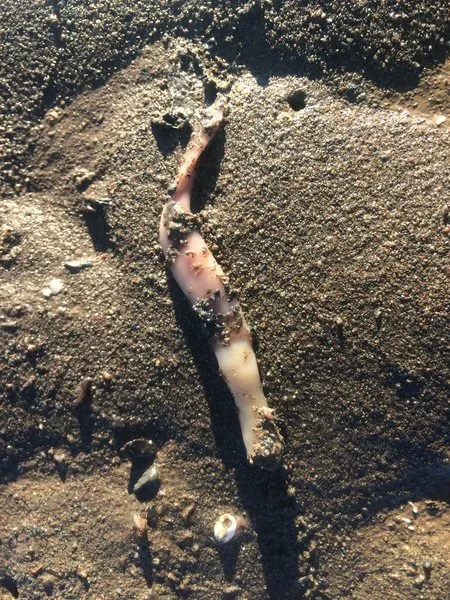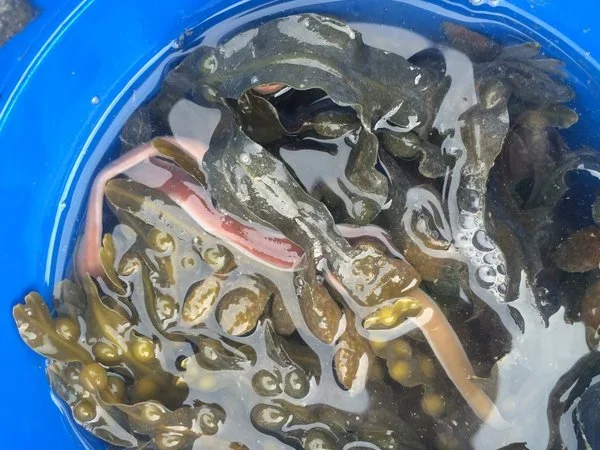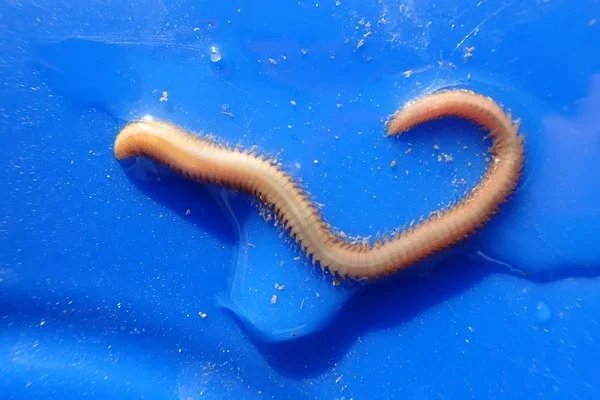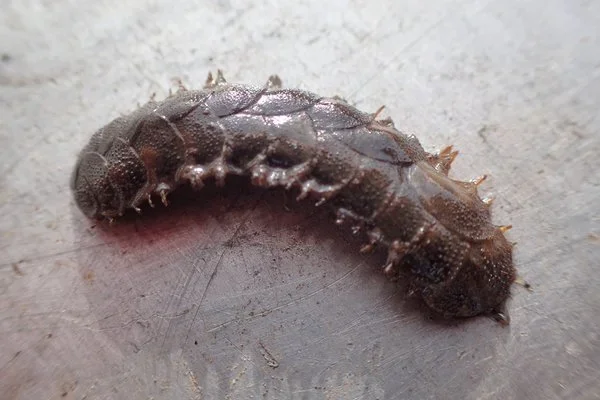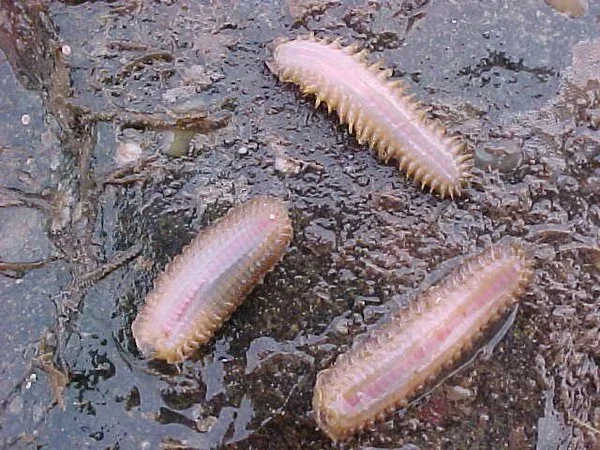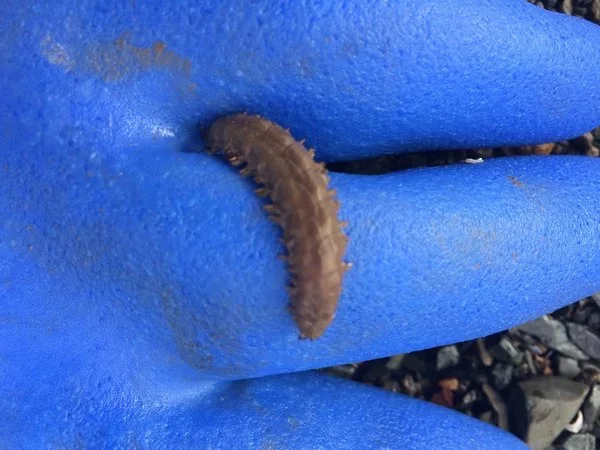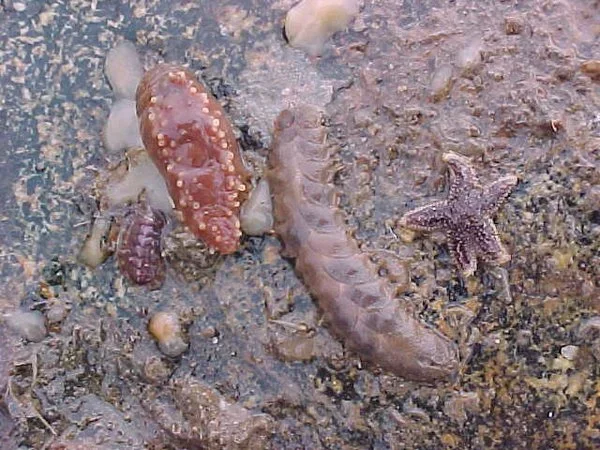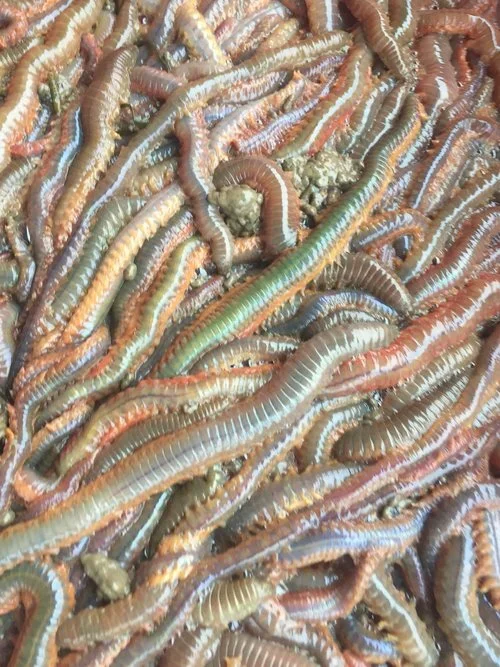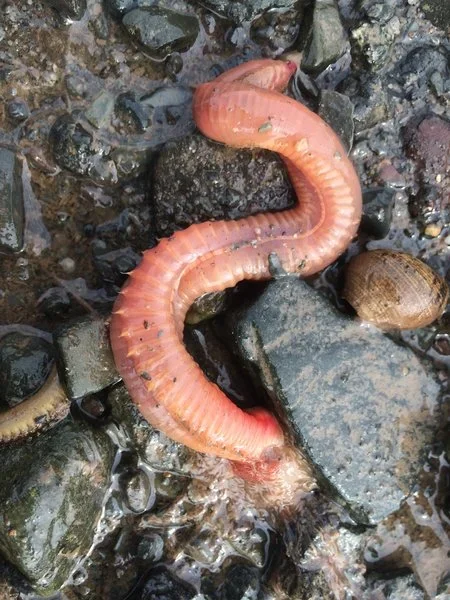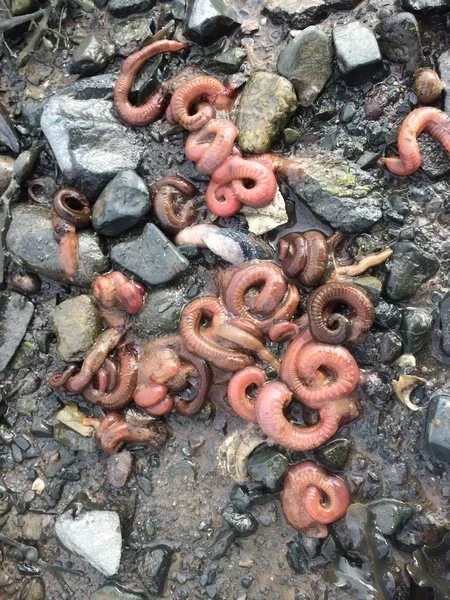Tidepool Tim says, “Milky ribbon worms are a real show-stopper in my world of cold water tide pools! I think perhaps it may be their resemblance to tapeworms or perhaps just how they move and can fracture themselves into many pieces. These worms fall into a group called the nemertean worms - most are fairly small and unimpressive - but these guys sometimes can be 3 or 4 feet long. They are commonly dug up by clammers and bloodwormers in the silty mud. Large ones are as thick as your thumb. These ribbon worms have a rounded head with a groove around the perimeter. Their mouth is a centimeter or so back from the head on the underside. If you find the worm feeding when you dig it up you can see a long thin white proboscis sticking out of the mouth - this too is quite impressive - it can be a foot or two long dangling up out of the mud. These worms use the proboscis to eat clams right out of their shells. The proboscis goes right down their siphon tubes. From time to time we will see milky ribbon worms swimming along in the shallow water, but mostly we find them by digging in the soft sandy mud. In the spring they seem to herd up and it is common to get several animals in one flip of the digging fork.”


